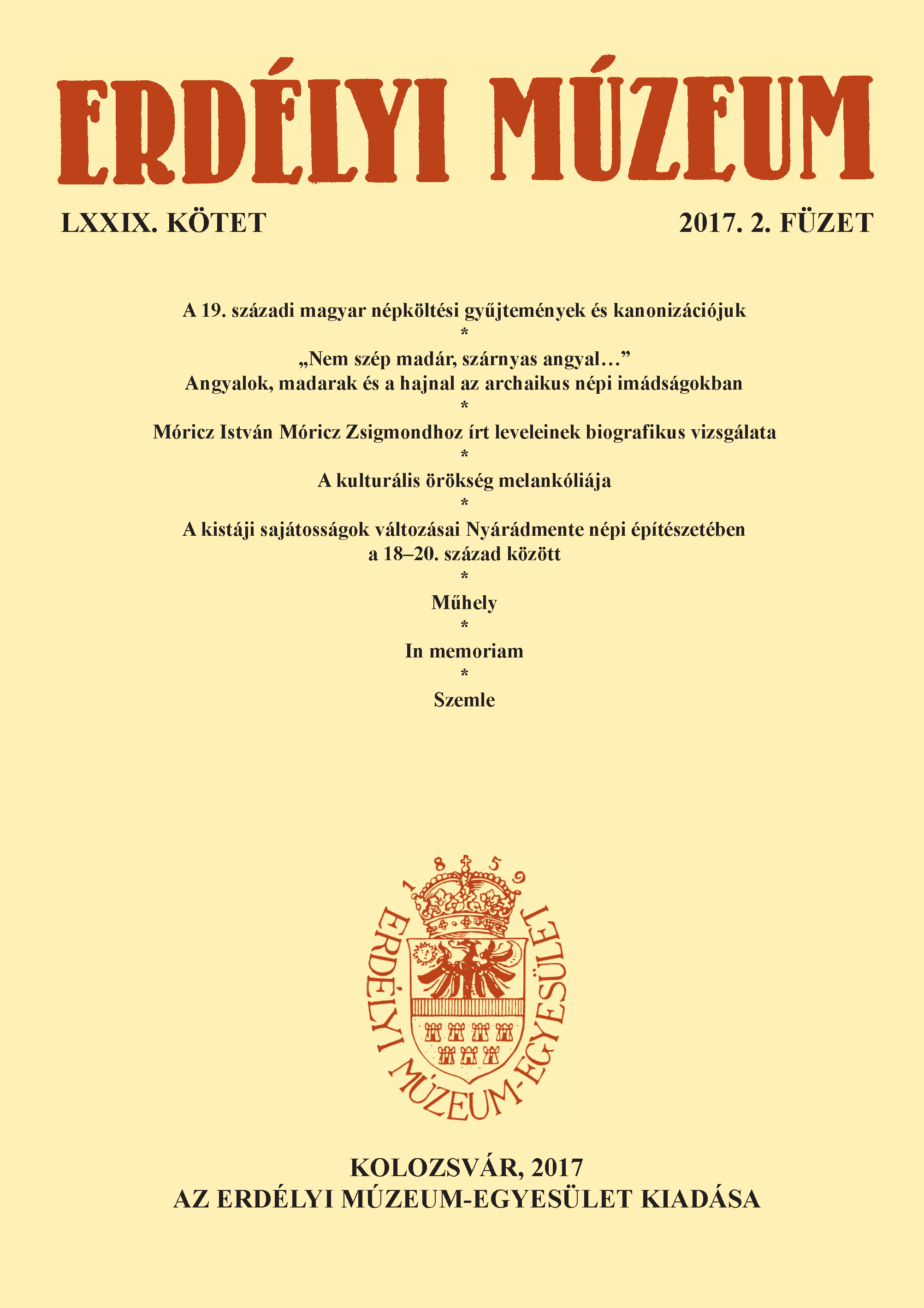
„Holt magyarok istápolója”. Száz esztendeje született Mikecs László
The study presents the works of László Mikecs, a linguist and historian who passed away at the age of 27 in the soviet prison camp of Taganrog in December 1945.
More...We kindly inform you that, as long as the subject affiliation of our 300.000+ articles is in progress, you might get unsufficient or no results on your third level or second level search. In this case, please broaden your search criteria.

The study presents the works of László Mikecs, a linguist and historian who passed away at the age of 27 in the soviet prison camp of Taganrog in December 1945.
More...
This paper deals with new epigraphical material which was excavated in Wādī al-Hašād in Jordan. The importance of this study lies in the publication of these yet unpublished inscriptions.
More...
Pour Ibn al-Muqaffaʿ (ca. 106/724–142/759) l’acte d’écrire dépasse le souci de considérer l’écriture comme un acte, à celui d’un homme engagé pour qui « l’écriture devient comme une signature, une institution qui découvre son passé et ses choix, lui donne une histoire, affiche sa situation et l’engage sans qu’il ait à le dire. Ce qui peut évidemment nous renvoyer à la position d’al-adīb. Privé du pouvoir politique et de la force matérielle, il use du seul pouvoir dont il dispose : le pouvoir du langage verbal écrit. Craignant la déviation du lecteur de la visée de l’écrivain Ibn al-Muqaffaʿ a pris le soin de tracer un processus de lecture régit par des règles visant à orienter l’acte de lecture, se qui a mené à l’élaboration d’une théorie de la lecture fondée sur la conscience précoce de différents genres de lectures, de différents types de lecteurs possibles et de différentes formes d’interprétation du texte écrit; le tout nourrit par le souci de préserver le sens de l’écriture et d’assurer la pérennité de l’œuvre écrite à travers le temps. Le résultat est la production d’un texte (Kalila wa Dimna) doté d’un double pouvoir au moyen duquel l’écriture a réussi à préserver et à conserver le sens que représente son aspect apparent, comme il peut produire un sens nouveau.
More...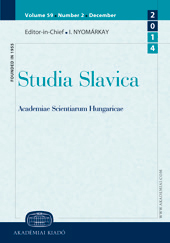
The magic word hocus-pocus first appeared in Slavic languages as well as in Hungarian as an international loanword. Its original source has not been satisfactorily identified in the international etymological literature, and thus etymological dictionaries of the individual Slavic languages are not in agreement with respect to its provenance, either. The present paper assesses the possible explanations proposed in the literature, including that on Slavic and Hungarian etymologies, and makes an attempt at clarifying the origin and early history of this internationalism. In particular, it is claimed that the magic word hocus-pocus has probably been first coined in English. It may subsequently have been borrowed both by Slavic languages and by Hungarian via German. On the other hand, the English word is claimed to be ultimately of Latin origin, its most probable source being a fragment of the Latin text of the Roman Catholic holy mass; more specifically, part of the formula of transubstantiation: hocest corpus meum ‘this is my body’.
More...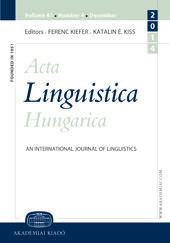
As a successor of József Budenz, József Szinnyei was a dominant figure, in the late nineteenth and early twentieth centuries, of research on the Finno-Ugric languages in Hungary and of the associated teaching tasks at university level. He was an adherent of the Neogrammarian approach whose attention encompassed, in addition to the study of the other Finno-Ugric languages, Hungarian historical linguistics (especially historical phonology and the history of certain morphological formatives). In his research work as a linguist, historical studies were clearly dominant. His sphere of interest was centred upon the history of Hungarian, its Finno-Ugric background, and its comparison with related languages. In his comparative studies, he professed that language was continually changing but, since etymological studies could detect regular sound correspondences in the words of languages of the same family, sounds did not change randomly but in a systematic manner. He emphasized that sound law type changes could only be established on the basis of words that certainly, or at least highly probably, belonged together.
More...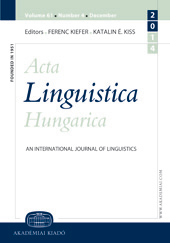
A variety of explanations have been offered for the observed cross-linguistic preponderance of suffixes over prefixes. Many are couched in terms of synchronic advantages, such as the cognitive simplicity of cross-category harmony between syntax and morphology, and preferences for processing the lexical meaning in stems before the grammatical material in affixes. But hypotheses about functional advantages cannot constitute explanations in themselves without accounts of the mechanisms by which the advantages are translated into grammatical structure. Here it is shown that the numerous exceptions to such hypotheses can be explained when the individual histories of the affixes are considered, including both their sources and the steps by which they develop.
More...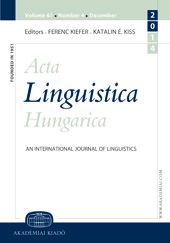
Heutzutage ist es ein allgemein verbreiteter Brauch in der historischen Sprachwissenschaft, dass diachrone Ergebnisse aus der synchronen Untersuchung der früheren Entwicklungsperioden der Sprache gezogen werden, um die Ursachen der linguistischen Veränderungen schlechterdings aufzudecken. Diese Arbeit versucht die Ursachen und den Prozess von morphophonologischen und morphosyntaktischen Veränderungen in der ungarischen Sprache sichtbar zu machen, die aus den inneren sprachlichen Zusammenhängen der mittel- und neuungarischen Perioden stammen und sich aus ihnen erklären lassen. Die untersuchten diachronen Erscheinungen gehören zu verschiedenen Änderungstypen. Sie können repräsentieren: 1. Systemzwang (wie im Falle des paradigmatischen Ausgleiches des Stammes ido ‘Zeit’); 2. Trennung von Form und Funktion (wie z.B. die diachrone Verbindung des Verbalpräfixes át- und der Postposition által ‘durch’) und 3. Wechselentwicklung der grammatischen Synonyme (wie z.B. Alternation der temporalen Bestimmungen mindéltig ~ mindig ‘immer’). Die Ursachen dieser Änderungen stammen aus dem synchronen System der gegebenen Periode und deuten daraufhin, dass allgemeine morphologische, semantische und funktionale Einflüsse ihres synchronen Verbindungssystems ihre historischen Veränderungen determinieren.
More...
In diesem Artikel untersucht die Autorin, gestützt auf das Material der Bände A magyar nyelv történeti nyelvtana [Historische Grammatik der ungarischen Sprache], welche wichtigeren Prozesse die Herausbildung und Entwicklung der ungarischen zusammengesetzten Sätze bis zum Ende der altungarischen Zeit gelenkt haben. Dabei beschäftigt sie sich ausführlicher mit den Grammatikalisierungsprozessen, angesprochen werden aber auch die von Ellipse, Analogie und syntaktischer Synonymie verursachten Veränderungen
More...
In A Historical Grammar of Hungarian (Benko et al. 1991; 1992), the chapters on non-finite verb forms (infinitives and participles) were written by the present author. In that book, conciseness, brevity and canonical style were required; due to lack of space, it was impossible for authors to give a detailed discussion of the points made and to motivate their decisions. In this short paper, a number of statements and formulations given there will be clarified; furthermore, an overall picture will be given about the historical system of non-finite verb forms in Hungarian.
More...
The linguistic research of colour names is a popular topic. It contributes to a better understanding of the history and development of languages and the culture of native speakers. This study deals with Kazakh colour names from the aspect of historical linguistics. First, the paper introduces the symbolic interpretation of Kazakh colours, then the categories and the functions of words derived from colour names are dealt with. Compounds that contain colour names are also in the focus of the present research. In the case of compounds, a specific usage of the colour names forming a particular meaning comes into view, which is a very interesting semantic field in Kazakh.
More...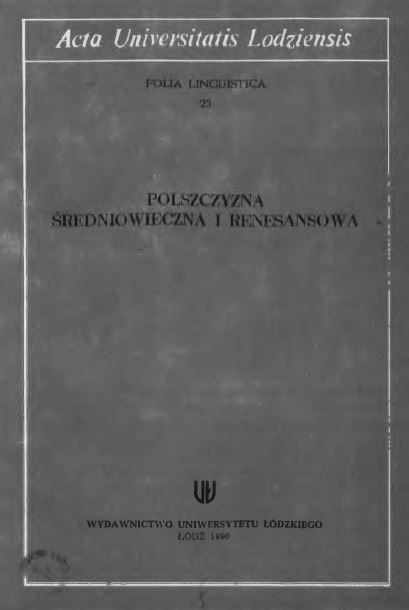
Eine Beschreibung von Strukturrelationen, die die Präpositionen eingehen, muß viele Aspekte umfassen und folgendes berücksichtigen: 1. Semantik der Präposition, 2. Struktur und Semantik der Relationsbasis und des nominalen Bestimmungsgliedes, 3. Art der Relation zwischen der Basis und dem Bestimmungsglied. Die Semantik der Präposition, die man als eine Abstraktion aus konkreten Relationen verstehen kann, stellt eine Beziehung zwischen der Basis und dem Bestimmungsglied her. Diese Beziehung wird dann durch die Semantik und Form der jeweiligen Glieder präzisiert, von Klassen von Relationen kann jedoch erst dann die Rede sein, wenn Reihenbildungen (Paradigmen) vorliegen. Diese allgemeinen Überlegungen liegen unserer Analyse zugrunde, die mit den altpolnischen Präpositionen *k(u)’ und ‘do’ exemplifiziert wird.
More...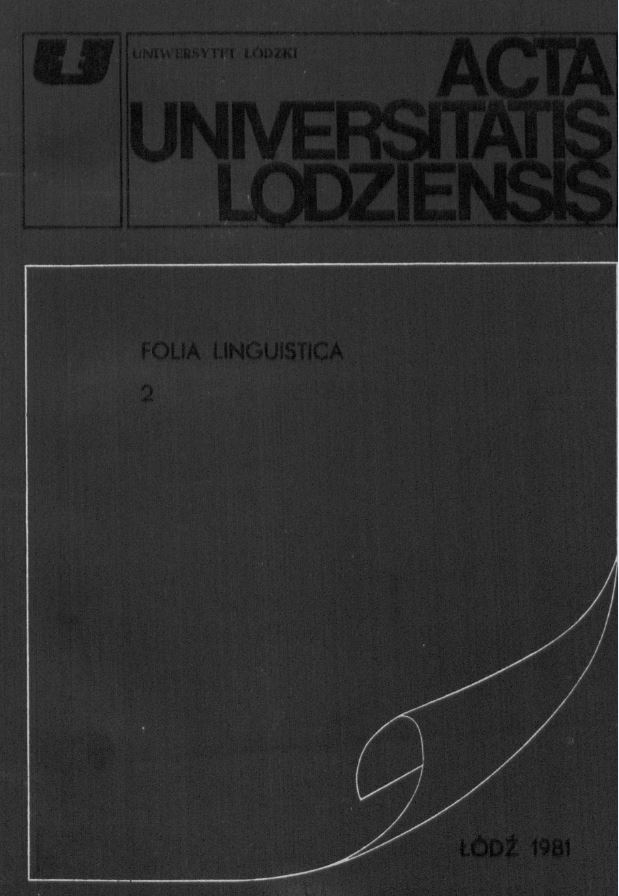
Apart from the derivation used in vocabulary expansion where derivative В with a meaning z2 is concomittant to the stem A with a moaning z2 e.g. kawa > kawiarnia we come across a derivation which assimilates or revives particular function of the types where derivative В with a meaning z replaces stem A with the same meaning z, e.g. former word zbrodzieti, a modern one zbrodniarz, or władczyna - władczyni etc. The first type of derivation car. be called multiple derivation, the other one - substitutional derivation. The latter, as a matter of fact, can be found only In diachronic studies. Tbus, the forms władczyni are, synchronicaily speaking, multiple derivatives and in diachronic sense they are substitutional. The role of substitutional derivation in the Polish language history is of considerable importance. It is used, first of all, for secondary differentiating of those functions of a formative which have originally been inadequately differentiated.
More...
This article considers the grammatical category of case, based on the entries of a manuscript dictionary of the second half of the 18th century. At present, the unpublished monument is kept in the manuscript department of the Russian National Library as a single handwritten copy. The compilers of the lexicographic work are Vyatka clergymen V. Kreknin and I. Platunov. Besides phonetic and lexical features, the manuscript has also preserved some grammatical peculiarities of the Mari language of 230 years ago. A careful study of the dictionary entries has identified 11 grammatical cases. The occurrence of such cases as causative and ablative is very limited in the dictionary. While the causative is mainly characteristic of the Western group of the Mari dialects, the ablative is more peculiar to the Urzhum dialect.
More...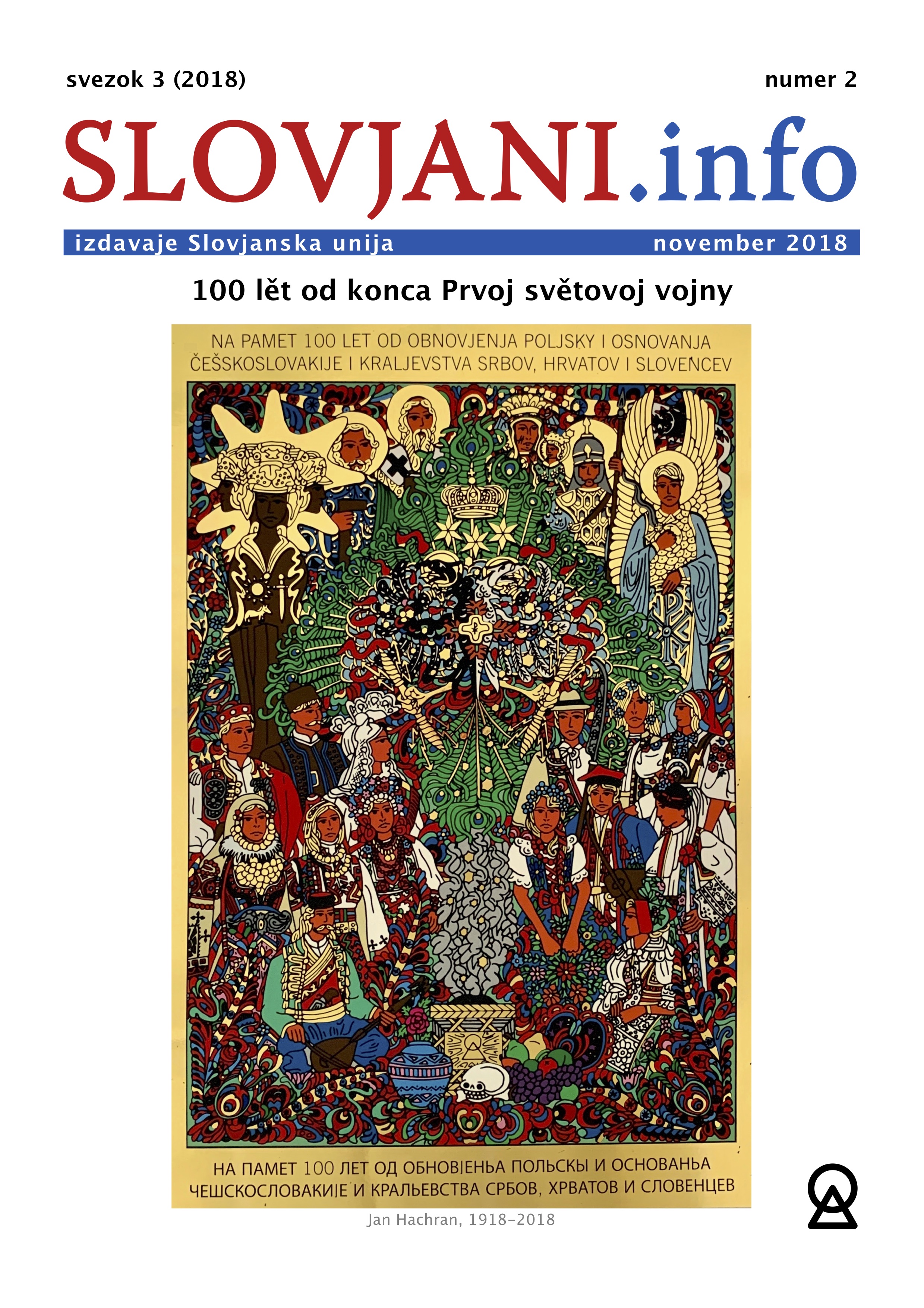
The article presents the author of Esperanto Lazar Ludwig Zamenhof and the influence of Slavic languages to Esperanto. / Članok govori o avtoru jezyka Esperanto Lazaru Ludviku Zamenhofu i o vlivah slovjanskyh jezykov do jezyka Esperanto.
More...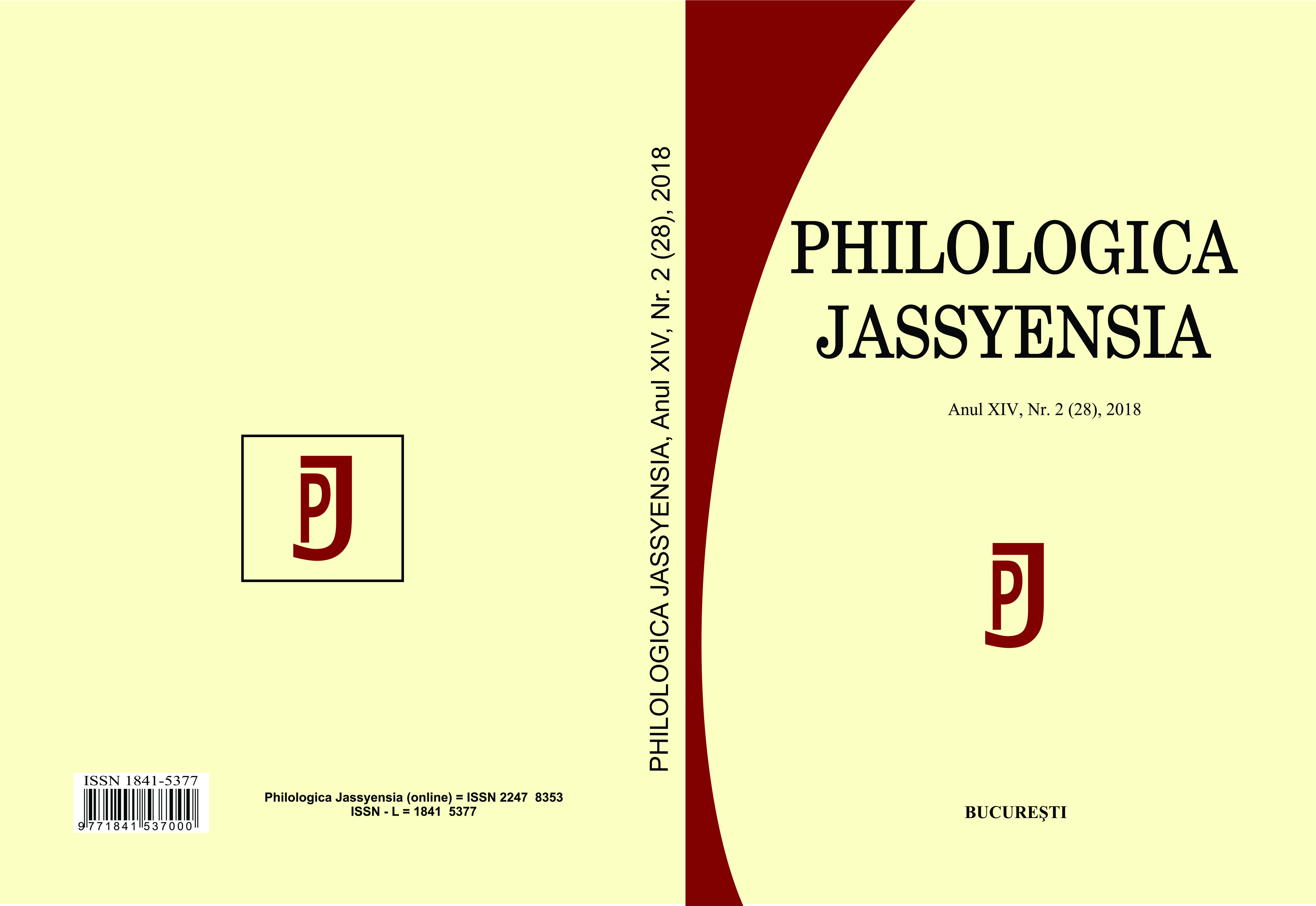
The paper aims to analyze how the main Romanian explanatory dictionaries deal with certain categories of nouns, which also implies a more precise glossary, and, implicitly, an adequate circumscription within the scientific taxonomies. In this case, we referred to the bird class and conducted a case study, referring specifically to the word Aquila. In the first stage of the analysis, we made a description of the general features characterizing the explanatory dictionaries and at the same time the essence of their complexity. In the second stage, I followed how the chosen word is dealt with in the main Romanian explanatory dictionaries, but also the sources that they used for the description and scientific classification of the referent. We have found that sometimes the dictionaries prefer to inspire each other, without the need to validate information from a scientific aortic in the field. This leads to inconsistencies between modern scientific acquisitions and information presented in dictionaries. On the other hand, the imperfections contained in the dictionaries are natural. They are due, on the one hand, to the immanent complexity of these glossaries, but also to a lexicographic inertia in relation to the sources of information substantiation. The inclusion of cutting-edge information from areas as varied as contemporary reality implies inherent difficulties, sometimes reflected by foreign dictionaries with a long tradition. We believe that these difficulties could be overcome, at least in part, by maintaining a permanent contact with specialists, and by refreshing the information sources of the dictionaries concerned.
More...
Since 2002, the law of equality act of disabled persons has been in effect to facilitate the barrier-free access to all regulation laws of public authorities (Behindertengleich-stellungsgesetz). This is not only literally meant as technically unhindered access for wheelchairs to public buildings, but also as inclusion of illiterate, mentally retarded people and social outsider in the public life. The task is now to translate ‘heavy German’ into ‘light language’, eg. by renouncing the genitive of nouns, the subjunctive as a mode, accurate numbers, just an example: not Bismarck was appointed as Chancellor in 1871, but „vor langer Zeit“ – a long time ago. The grammatical rules of this light German are exemplified in the new DUDEN-Leichte Sprache (Berlin, 2016). Our question: to what extent can immigrants, refugees or foreigners gain their language competence with the help of this light German? Is teaching by DaF-Programs (‘German as a foreign language’) and using the DUDEN-Grammar now overtaken? Finally, one has to take into account that the social integration of these persons also includes language contact with the locals. The basic value estimation for an elaborate Hochdeutsch/ ‘high-German’, especially in everyday life, should not be neglected.
More...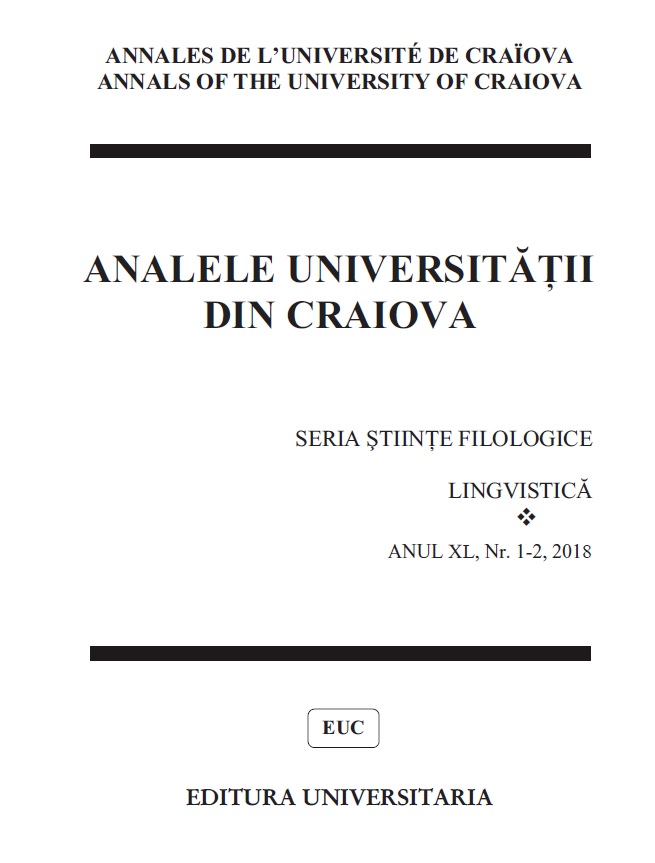
The intent of this approach is to outline a general framework of the historical and cultural conditions of literary Romanian language during the late 18th century and the next century, without aiming to be exhaustive. The very important modernization of the culture of Romanians and, as an integral part of it, of our literary language, is determined by the economic and social progress experienced by Romanian countries. With all the hesitations and orientations sometimes inconsistent with our national spirit, the success of the period is visible: literary Romanian language follows an ascending process that will inevitably lead to its stabilization and modernization.
More...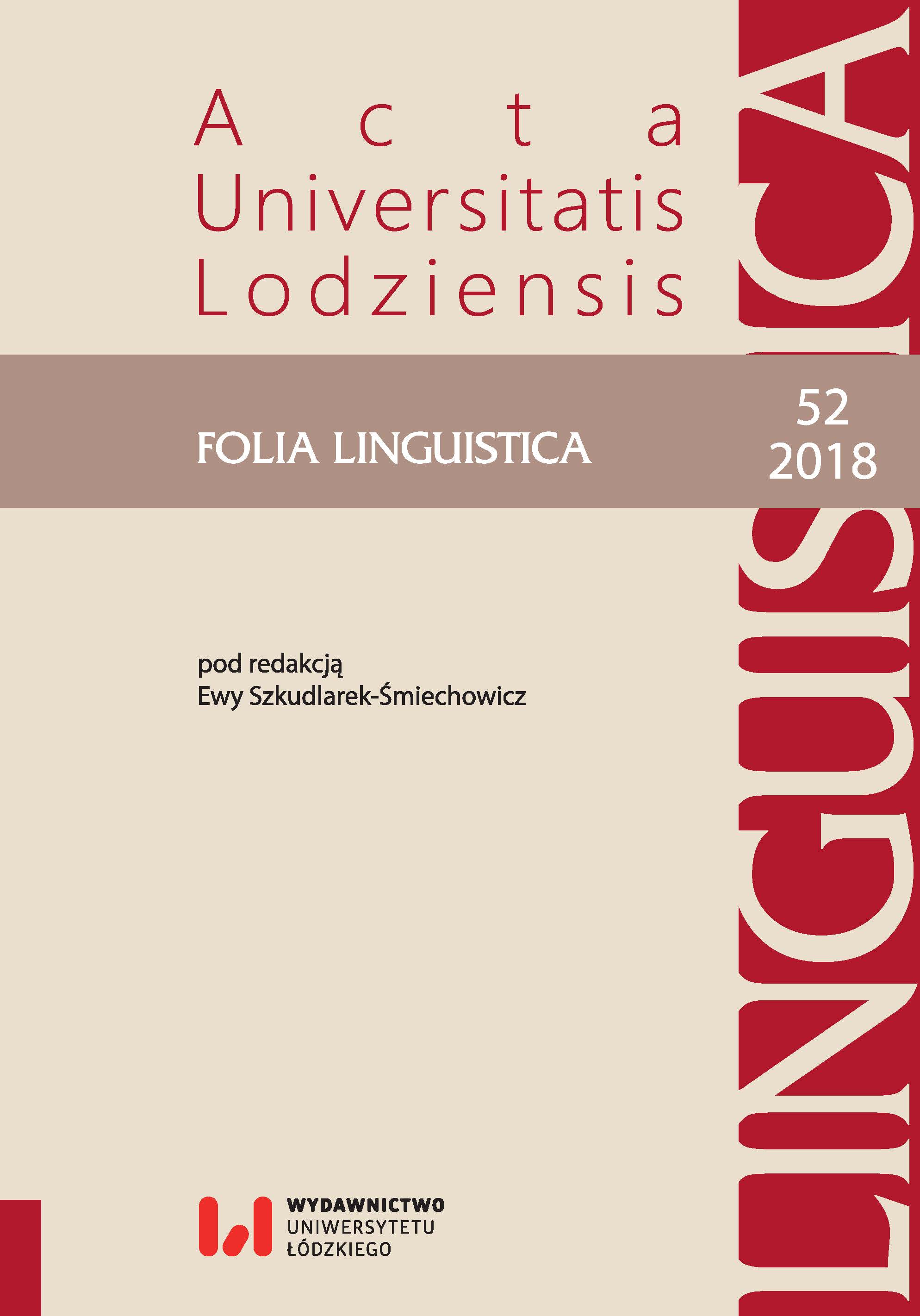
The subject of this study is inflection of nouns in Książki o wychowaniu dzieci [...] (Cracow 1558) by Erazm Gliczner. The main research aim was verifying progressive of standardisation of the Polish language in comparison to the first part of the sixteenth century. Due to the fact that sixteenth century was a time of the biggest development of Polish language changes were dynamic. Presented research results are only general trends but they show us a progress of normalization. Polish author had a good intuition with regard to developmental tendencies of 16th Polish language. He usually was choosing new variants of inflection forms.
More...
The article presents words that people use to describe migrants. The analysis mainlyconcerned words borrowed from foreign languages. This presentation shows the culturalcontext of using names of immigrants in Polish.
More...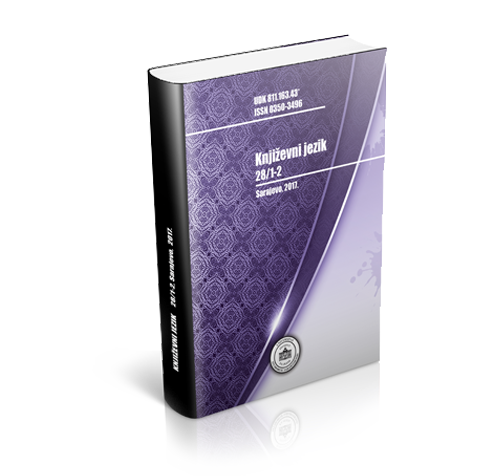
Prof. dr Herta Kuna rođena je 13. marta 1922. u Slav. Požegi. Gimnaziju je pohađala u rodnom mjestu i Sarajevu. Od 1942. sarađivala je sa NOP-om. Na Filozofski fakultet u Sarajevu upisala se 1952, na grupu Srpsko-hrvatski jezik i istorija jugoslavenskih književnosti. Diplomirala je 1958, kada je i izabrana za asistenta za staroslavenski jezik. Doktorirala je 1962. Godine 1963. izabrana je za docenta, 1968. za vanrednog, a 1974. za redovnog profesora za staroslavenski jezik i istoriju literarnog jezika. Penzionirana je januara 1987. godine.
More...